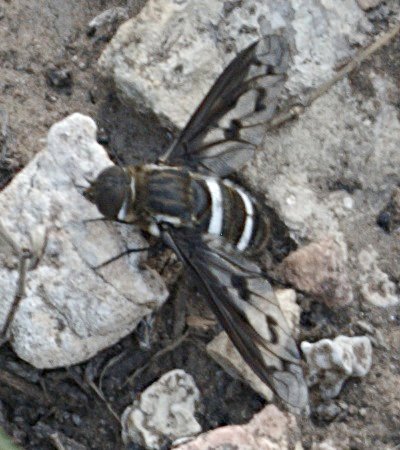|
Heliamphora Pulchella
''Heliamphora pulchella'' (Latin: ''pulchellus'' = pretty) is a species of marsh pitcher plant endemic to the Chimanta Massif and surrounding tepuis in Venezuela. It is one of the smallest species and closely related to '' H. minor''. Infraspecific taxa Two major variants of ''H. pulchella'' are known: the type variety, which bears conspicuous retentive hairs on the inner pitcher surface, and an incompletely diagnosed taxon from Amurí Tepui, which lacks these hairs.McPherson, S., A. Wistuba, A. Fleischmann & J. Nerz 2011. ''Sarraceniaceae of South America''. Redfern Natural History Productions, Poole. References Further reading * Brewer-Carías, C. (2012–2013). ''Río Verde'' 9: 73–88. * Fleischmann, A. & J.R. Grande Allende (2012) 2011'br>Taxonomía de ''Heliamphora minor'' Gleason (Sarraceniaceae) del Auyán-tepui, incluyendo una nueva variedad axonomy of ''Heliamphora minor'' Gleason (Sarraceniaceae) from Auyán-tepui, including a new variety.''Acta ... [...More Info...] [...Related Items...] OR: [Wikipedia] [Google] [Baidu] |
Andreas Wistuba
Andreas Wistuba (born 4 March 1967) is a German taxonomist and botanist specialising in the carnivorous plant genera ''Heliamphora'' and '' Nepenthes''. More than half of all known ''Heliamphora'' species have been described by Wistuba. Publications * Nerz, J. & A. Wistuba 1994Five new taxa of ''Nepenthes'' (Nepenthaceae) from North and West Sumatra ''Carnivorous Plant Newsletter'' 23(4): 101–114. * Wistuba, A. & H. Rischer 1996''Nepenthes lavicola'', a new species of Nepenthaceae from the Aceh Province in the North of Sumatra ''Carnivorous Plant Newsletter'' 25(4): 106–111. * Nerz, J. & A. Wistuba 2000''Heliamphora hispida'' (Sarraceniaceae), a new species from Cerro Neblina, Brazil-Venezuela ''Carnivorous Plant Newsletter'' 29(2): 37–41. * Wistuba, A., P. Harbarth & T. Carow 2001''Heliamphora folliculata'', a new species of ''Heliamphora'' (Sarraceniaceae) from the ‘Los Testigos’ Table Mountains in the South of Venezuela ''Carnivorous Plant Newsletter'' 30(4): 120 ... [...More Info...] [...Related Items...] OR: [Wikipedia] [Google] [Baidu] |
Joachim Nerz
Dr. Joachim Nerz (born 1964) is a German taxonomist and botanist specialising in the carnivorous plant genera ''Heliamphora'' and '' Nepenthes''. Nerz has described several new species, mostly with Andreas Wistuba. Publications * Schlauer, J. & J. Nerz 1994. Notes on ''Nepenthes'' (Nepenthaceae). I. Contributions to the Flora of Sumatra. ''Blumea'' 39: 139–142. * Nerz, J. & A. Wistuba 1994Five new taxa of ''Nepenthes'' (Nepenthaceae) from North and West Sumatra ''Carnivorous Plant Newsletter'' 23(4): 101–114. * Nerz, J., P. Mann, T. Alt & T. Smith 1998''Nepenthes sibuyanensis'', a new ''Nepenthes'' from Sibuyan, a remote island of the Philippines ''Carnivorous Plant Newsletter'' 27(1): 18–23. * Nerz, J. 1998Rediscovery of an outstanding ''Nepenthes'': ''N. aristolochioides'' (Nepenthaceae) ''Carnivorous Plant Newsletter'' 27(3): 101–114. * Nerz, J. & A. Wistuba 2000''Heliamphora hispida'' (Sarraceniaceae), a new species from Cerro Neblina, Brazil-Venezuela ''Carnivorous ... [...More Info...] [...Related Items...] OR: [Wikipedia] [Google] [Baidu] |
Das Taublatt
''Das Taublatt'' is a triannual German-language periodical based in Bochum and the official publication of Gesellschaft für fleischfressende Pflanzen im deutschsprachigen Raum, a carnivorous plant society based in Germany.Rice, B. 2010Carnivorous Plant Society Archives The Carnivorous Plant FAQ. rchived page from October 10, 2010/ref>''Das Taublatt'' . Gesellschaft für fleischfressende Pflanzen. Typical articles include matters of horticultural interest, field reports, and new descriptions. The journal was established in 1984. [...More Info...] [...Related Items...] OR: [Wikipedia] [Google] [Baidu] |
Heliamphora Pulchella Akopan
The genus ''Heliamphora'' ( or ; Greek: ''helos'' "marsh" and ''amphoreus'' "amphora") contains 23 species of pitcher plants endemic to South America.McPherson, S., A. Wistuba, A. Fleischmann & J. Nerz 2011. ''Sarraceniaceae of South America''. Redfern Natural History Productions, Poole. The species are collectively known as sun pitchers, based on the mistaken notion that the ''heli'' of ''Heliamphora'' is from the Greek ''helios'', meaning "sun". In fact, the name derives from ''helos'', meaning marsh, so a more accurate translation of their scientific name would be marsh pitcher plants. Species in the genus ''Heliamphora'' are carnivorous plants that consist of a modified leaf form that is fused into a tubular shape. They have evolved mechanisms to attract, trap, and kill insects; and control the amount of water in the pitcher. At least one species ('' H. tatei'') produces its own proteolytic enzymes that allows it to digest its prey without the help of symbiotic bacteria. Mo ... [...More Info...] [...Related Items...] OR: [Wikipedia] [Google] [Baidu] |
Latin
Latin (, or , ) is a classical language belonging to the Italic branch of the Indo-European languages. Latin was originally a dialect spoken in the lower Tiber area (then known as Latium) around present-day Rome, but through the power of the Roman Republic it became the dominant language in the Italian region and subsequently throughout the Roman Empire. Even after the fall of Western Rome, Latin remained the common language of international communication, science, scholarship and academia in Europe until well into the 18th century, when other regional vernaculars (including its own descendants, the Romance languages) supplanted it in common academic and political usage, and it eventually became a dead language in the modern linguistic definition. Latin is a highly inflected language, with three distinct genders (masculine, feminine, and neuter), six or seven noun cases (nominative, accusative, genitive, dative, ablative, and vocative), five declensions, four verb conjuga ... [...More Info...] [...Related Items...] OR: [Wikipedia] [Google] [Baidu] |
Heliamphora
The genus ''Heliamphora'' ( or ; Greek: ''helos'' "marsh" and ''amphoreus'' " amphora") contains 23 species of pitcher plants endemic to South America.McPherson, S., A. Wistuba, A. Fleischmann & J. Nerz 2011. '' Sarraceniaceae of South America''. Redfern Natural History Productions, Poole. The species are collectively known as sun pitchers, based on the mistaken notion that the ''heli'' of ''Heliamphora'' is from the Greek ''helios'', meaning "sun". In fact, the name derives from ''helos'', meaning marsh, so a more accurate translation of their scientific name would be marsh pitcher plants. Species in the genus ''Heliamphora'' are carnivorous plants that consist of a modified leaf form that is fused into a tubular shape. They have evolved mechanisms to attract, trap, and kill insects; and control the amount of water in the pitcher. At least one species ('' H. tatei'') produces its own proteolytic enzymes that allows it to digest its prey without the help of symbiotic bacteria ... [...More Info...] [...Related Items...] OR: [Wikipedia] [Google] [Baidu] |
Endemism
Endemism is the state of a species being found in a single defined geographic location, such as an island, state, nation, country or other defined zone; organisms that are indigenous to a place are not endemic to it if they are also found elsewhere. For example, the Cape sugarbird is found exclusively in southwestern South Africa and is therefore said to be ''endemic'' to that particular part of the world. An endemic species can be also be referred to as an ''endemism'' or in scientific literature as an ''endemite''. For example '' Cytisus aeolicus'' is an endemite of the Italian flora. '' Adzharia renschi'' was once believed to be an endemite of the Caucasus, but it was later discovered to be a non-indigenous species from South America belonging to a different genus. The extreme opposite of an endemic species is one with a cosmopolitan distribution, having a global or widespread range. A rare alternative term for a species that is endemic is "precinctive", which applies to ... [...More Info...] [...Related Items...] OR: [Wikipedia] [Google] [Baidu] |
Tepui
A tepui , or tepuy (), is a table-top mountain or mesa found in South America, especially in Venezuela and western Guyana. The word tepui means "house of the gods" in the native tongue of the Pemon, the indigenous people who inhabit the Gran Sabana. Tepuis tend to be found as isolated entities rather than in connected ranges, which makes them the host of a unique array of endemic plant and animal species. Some of the most outstanding tepuis are Auyantepui, Autana, Neblina, and Mount Roraima. They are typically composed of sheer blocks of Precambrian quartz arenite sandstone that rise abruptly from the jungle, giving rise to spectacular natural scenery. Auyantepui is the source of Angel Falls, the world's tallest waterfall. Morphology These table-top mountains are the remains of a large sandstone plateau that once covered the granite basement complex between the north border of the Amazon Basin and the Orinoco, between the Atlantic coast and the Rio Negro. T ... [...More Info...] [...Related Items...] OR: [Wikipedia] [Google] [Baidu] |
Venezuela
Venezuela (; ), officially the Bolivarian Republic of Venezuela ( es, link=no, República Bolivariana de Venezuela), is a country on the northern coast of South America, consisting of a continental landmass and many islands and islets in the Caribbean Sea. It has a territorial extension of , and its population was estimated at 29 million in 2022. The capital and largest urban agglomeration is the city of Caracas. The continental territory is bordered on the north by the Caribbean Sea and the Atlantic Ocean, on the west by Colombia, Brazil on the south, Trinidad and Tobago to the north-east and on the east by Guyana. The Venezuelan government maintains a claim against Guyana to Guayana Esequiba. Venezuela is a federal presidential republic consisting of 23 states, the Capital District and federal dependencies covering Venezuela's offshore islands. Venezuela is among the most urbanized countries in Latin America; the vast majority of Venezuelans live in the cities of the n ... [...More Info...] [...Related Items...] OR: [Wikipedia] [Google] [Baidu] |
Heliamphora Minor
''Heliamphora minor'' (Latin: ''minor'' = smaller) is a species of marsh pitcher plant endemic to Auyán-tepui in Venezuela. As the name suggests, it is one of the smallest species in the genus. It is closely related to '' H. ciliata'' and '' H. pulchella''. Cultivation ''Heliamphora minor'' is one of the more widely available species in the genus for cultivation. Typically, ''H. minor'' is grown under strong fluorescent lights in a terrarium, or in a greenhouse with partial sunlight. Like other carnivorous plants, ''H. minor'' requires water free from added minerals and chemicals. It can survive a wide range of temperatures, preferably around 70–90 °F, however during the night the temperature must drop to around 10 degrees less than the day temperature. Soil for ''H. minor'' must be low in nutrients. Combinations of washed sand, orchid bark, long fibered sphagnum moss (dried or living), peat moss, and perlite may be used. ''Heliamphora'' plants also require ... [...More Info...] [...Related Items...] OR: [Wikipedia] [Google] [Baidu] |
Undescribed Taxon
In taxonomy, an undescribed taxon is a taxon (for example, a species) that has been discovered, but not yet formally described and named. The various Nomenclature Codes specify the requirements for a new taxon to be validly described and named. Until such a description has been published, the taxon has no formal or official name, although a temporary, informal name is often used. A published scientific name may not fulfil the requirements of the Codes for various reasons. For example, if the taxon was not adequately described, its name is called a '' nomen nudum''. It is possible for a taxon to be "undescribed" for an extensive period of time, even if unofficial descriptions are published. An undescribed species may be referred to with the genus name, followed by "sp"., but this abbreviation is also used to label specimens or images that are too incomplete to be identified at the species level. In some cases, there is more than one undescribed species in a genus. In this case, th ... [...More Info...] [...Related Items...] OR: [Wikipedia] [Google] [Baidu] |





.jpg)


